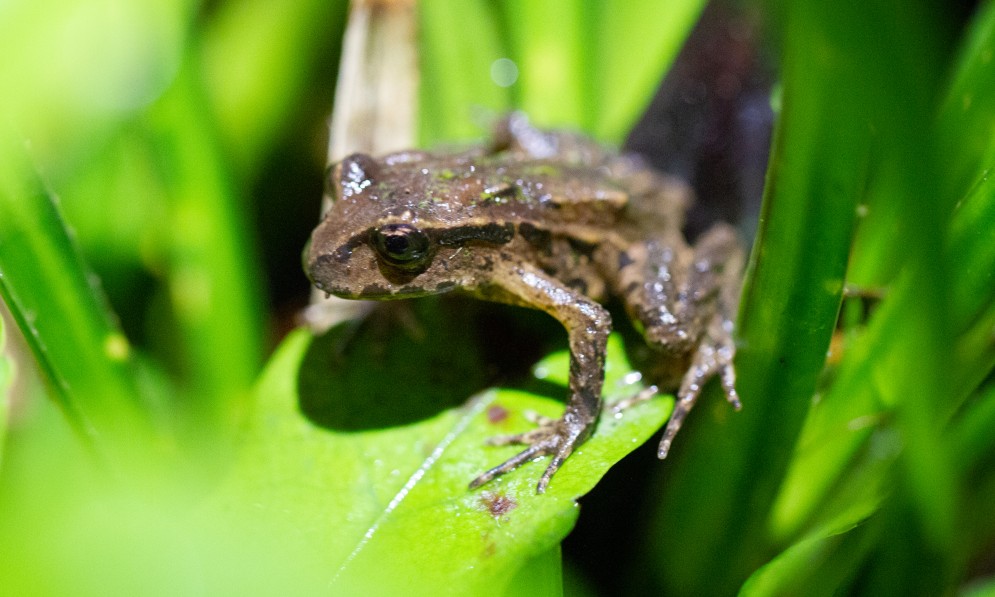The Coromandel Peninsula is apparently home to 50 million Archey's frogs. Stuart Attwood set out to see how many he could find over a weekend.
The news that there could be 54.8 million critically endangered Archey’s frogs present on the Coromandel Peninsula, instead of the previously thought 5000-20,000, raised conservationists’ eyebrows earlier this year.
Forest & Bird magazine
A version of this story was first published in the Summer 2022 issue of Forest & Bird magazine.
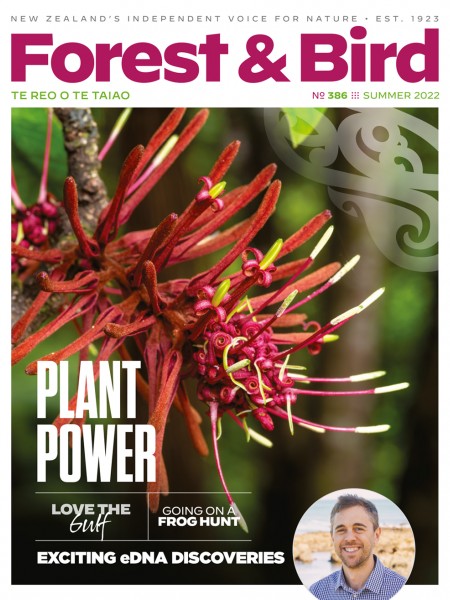
The figure was contained in an environmental report provided by OceanaGold to the Hauraki District Council in support of its consent application to mine under conservation land at Coromandel Forest Park.
The mining company’s 50 million estimate would see us wading through frogs at various places around the Peninsula, so I decided to venture forth with Forest & Bird’s communications adviser Ellen Rykers and see how many of these elusive critters we could find over a weekend.
We started our frog hunt at Tim and Jude Hooson’s place at the Mahakirau Forest Estate, near Coromandel Town. This 600ha private nature sanctuary is divided into individual blocks, with each landowner putting money into a fund that sees the whole estate heavily trapped, baited, and monitored.
The trapping system, Tim explained, was set up to protect birds as well as ground-dwelling species such as frogs and geckos. In fact, the Mahakirau Estate is a sanctuary for many critically endangered species, including Archey’s frogs and the rare Helms or forest ringlet butterfly.
The Hoosons are both heavily involved in various conservation projects around the Coromandel Peninsula and as far down as the Kaimai Mamaku ranges. Jude is the chief executive of the Predator-Free Hauraki Coromandel Community Trust.
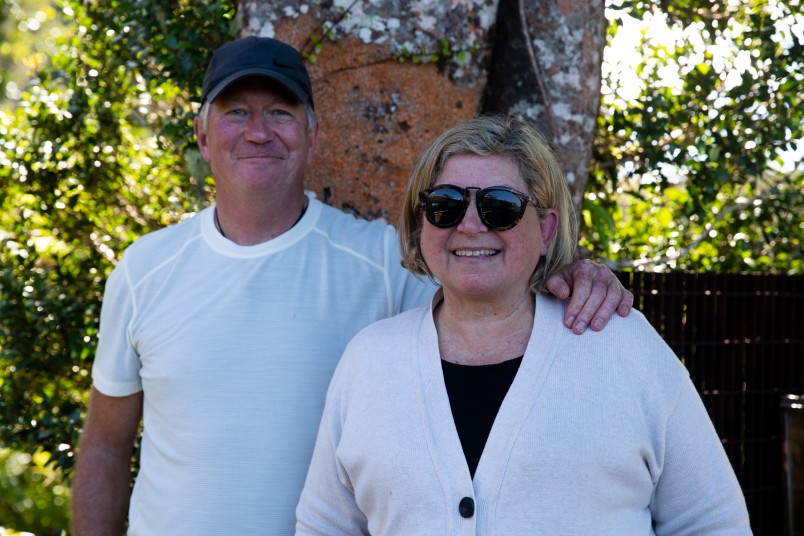
Tim and Jude Hooson. Image supplied
Mahakirau is often visited by botanists and other scientists looking to research or view various species living in the area. Sara Smerdon, one of the residents and our guide, has been consulted for her Archey’s frog knowledge by DOC and Auckland Zoo, which runs an Archey’s frog breeding programme.
It was a reasonably cool evening with very light rain. Setting off at around 10pm, we were taken to an area where frogs were known to be present. It didn’t take long until we were rewarded with finding an Archey’s frog comfortably nestled in a fern. We were delighted, and for about two minutes we got to observe this lovely individual.
We were happy to see at least one frog on our expedition. We also caught sight of wētā, a northern striped gecko, a forest ringlet caterpillar, and various other invertebrates.
The following day, we met up with Tim and Jude and spent a further few hours searching over tracks and around a stream, poking around any place that looked like it could be potential frog habitat.
On this search, Tim checked traps and bait stations as we went. He also pointed out the Gahnia or type of “cutty grass” that is host to the forest ringlet butterfly. We were unsuccessful in our attempts to find further frogs, but it was a very informative walk in a particularly beautiful part of the Coromandel.
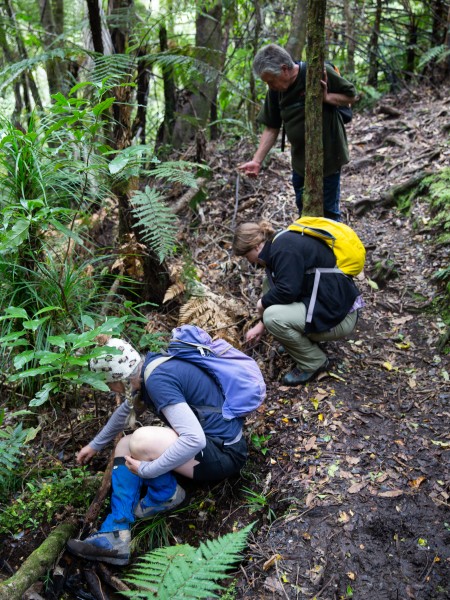
Clive Duxfield, Ellen Rykers, and Suzanne Clegg search for frogs near the Wharekirauponga Track, Coromandel Forest Park. Image supplied
The next day, we travelled to Coromandel Forest Park and met up with Suzanne Clegg and Clive Duxfield, both from Earthwatch Whangamata, a group aligned with the anti-mining group Coromandel Watchdog.
OceanaGold wants to expand its gold-mining operations at Waihī by digging under the Wharekirauponga Track area. It is planning to build a 7km double tunnel to carry gold to its processing plant at Waihī, including four 8mx8m ventilation shafts and structures above ground.
It says its mining activities at Wharekirauponga will be beneficial to frogs as well as other species via investment into predator control and general care for the area in which they are working.
Clive has been working in and around the Wharekirauponga Track for more than 30 years, and Suzanne is a former DOC botanist. Both have seen frogs in the area, including Archey’s and another ancient endemic species Hochstetter’s frog.
During our searches, there was a lot of discussion around the effect of ground vibration on Archey’s frogs and how the proposed gold mining could affect the water table. This is a beautiful area, with hundreds of regrowth kauri that, along with the frogs, could be put in jeopardy by the mining activities.
The track is a loop that has been closed off by the mining company, who have attempted to block access to a swing bridge that overlooks a lovely waterfall and the Wharekirauponga Stream. In quiet protest, locals have been removing the timber nailed across the entrances to the bridge.
OceanaGold has sponsored a boot-washing station at the beginning of the track to prevent kauri dieback. I hope any mining equipment used to drill and create ventilation shafts will be thoroughly cleaned before being shifted to each new site.
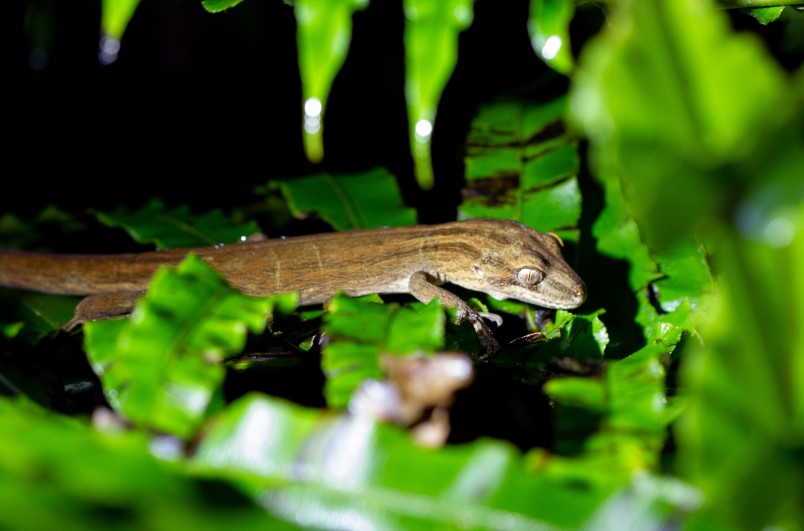
A northern striped gecko at Mahakirau. Image Stuart Attwood
A frog had been spotted beside a creek within the previous week or so. A tramper had injured his ankle and had sat down with his foot in the stream to ease the injury and turned to see a frog looking at him.
He could not verify the species, but from the description it would have been either an Archey’s or Hochstetter’s. We looked in the area where the sighting had taken place to no avail. In fact, over two days of searching, assisted by experts, we found only one Archey’s frog.
There was nothing scientific about our exercise. The variables for searching are complex. The weather, terrain, and altitude play a part, as does the fact that Archey’s are shy and nocturnal.
This article was never intended to be a deep dive into the mining operations and potential environmental damage. It was purely an exercise to see whether there was any credence to the 50 million frogs claim. From our time searching, to put it lightly, I am sceptical about OceanaGold’s estimate.
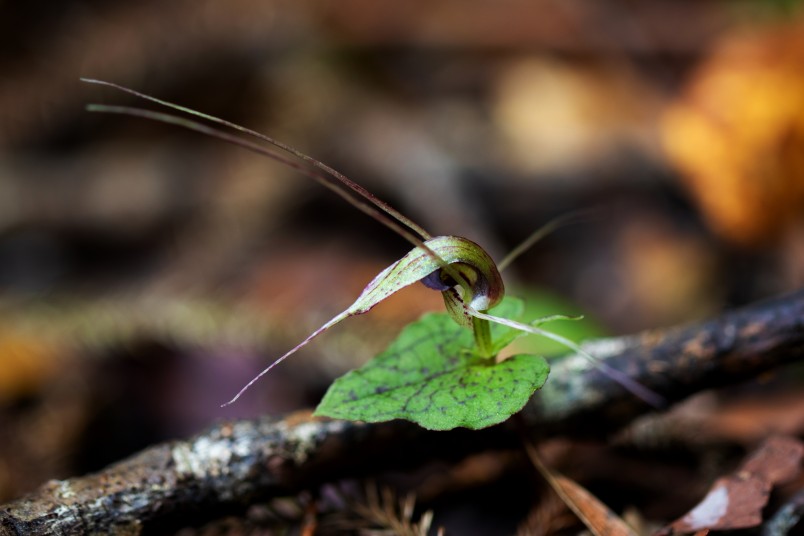
A spider orchid in the Wharekirauponga Valley. Image Stuart Attwood
Thank you...
... to Jude and Tim Hoosen, Sara Smerdon, Suzanne Clegg, and Clive Duxfield for your time, knowledge, and hospitality.

